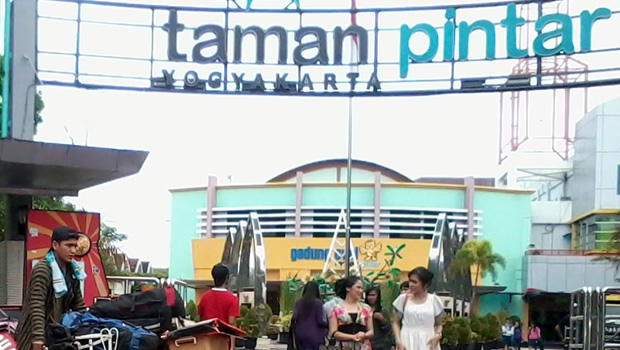On a recent backpacking trip to Indonesia with my husband, who is also an instructional designer, we visited the famous Taman Pintar (literally, Garden of Knowledge) in Yogyakarta. We expected to see the usual collection of old relics from a time long gone, but were pleasantly surprised to find that the Government had tried to set up a modern museum, complete with hands-on learning.
Taman Pintar is divided into a number of zones and visitors need to buy a separate ticket for each zone. Due to a lack of time, we decided to skip the planetarium and head straight for the ‘Memorabilia’ zone (5,000 IDR or 0.5 USD per person) and the ‘Oval’ zone (10,000 IDR or 1.0 USD per person).
The ‘Memorabilia’ zone is dedicated to the rulers of Yogyakarta and the leaders of Indonesia. Large portraits of each of the Sultans and Presidents adorn the walls, while some of the personal effects of these political leaders are displayed in glass show cases.
While we were definitely impressed by the homage that had been paid to these men and women, as instructional designers, we were irresistibly drawn to the interactive screens placed in each of the rooms. Each of these touch screens was connected to a larger screen on a wall that had intentionally been left blank for the purpose.
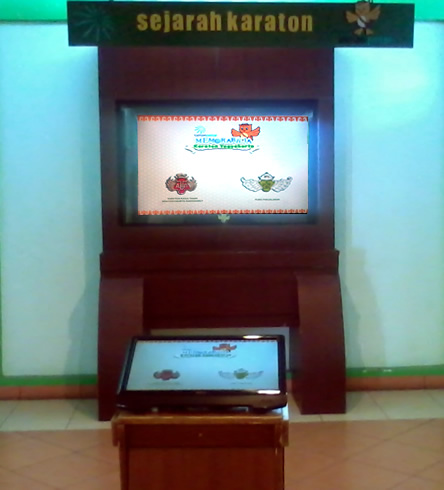
We wondered why the larger screen was required when the touch screen was large enough to read from. We soon got our answer when a large group of school children swarmed into the room along with two of their teachers, one of whom proceeded to operate the touch screen, while the children gathered in a semicircle around her and watched the information displayed on the larger screen. That’s when we remembered our host had told us that Taman Pintar had been built as an educational center for school children.
Once the children moved on to the next room and we took our turn with the first of the touch screens, we realized that what we were looking at wasn’t very different from the eLearning courses we create back home. While the text and the audio were in Bahasa Indonesia (the national language), it was clear that it was one large multi-level interactivity that provided information about the ten Sultans who had ruled Yogyakarta.
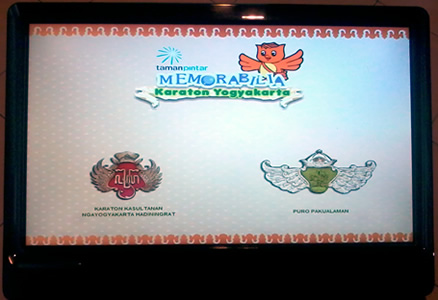
The tabbed menu allowed us to select what we wanted to look at—each of the Sultans, the important events in the history of their family’s reign, the gallery of photographs and videos, etc.
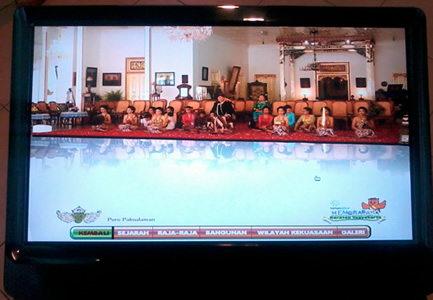
When we clicked each of these tabs, we were presented with some text and images, and, in some cases, videos, as well as the option to delve deeper to discover more information.
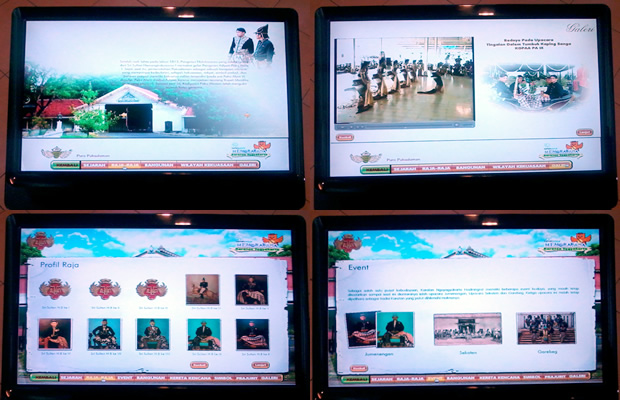
We couldn’t help but feel it was a typical eLearning course that had been launched on a touch screen device, and we spent the next ten minutes going through the interactivity and exclaiming every time we came across something that resembled work we had done in the past.
As we walked through the other rooms in the ‘Memorabilia’ zone, we came across a few more of these interactivities, each of them launched on a touch screen and that functioned much the same way as the first one.
We then headed to the ‘Oval’ zone, which was dedicated to science and technology. There were a large number of devices that visitors could use to experience and learn about different scientific phenomena.
For example, while the section on earthquakes had posters (depicting how earthquakes are caused, how they are predicted and recorded, and how early warnings are given to facilitate evacuation) and scale models (one of a transverse section of a piece of land showing the waves of an earthquake passing through it and another of a seismic activity monitoring station), it also had an earthquake simulator, which you could use to experience what earthquakes of various intensities would feel like.

But again, being instructional designers, we couldn’t resist spending more time with the eLearning activities that were distributed throughout the zone. My favorite was one that helped the learner understand how a fossil is excavated and an impression of it subsequently taken.
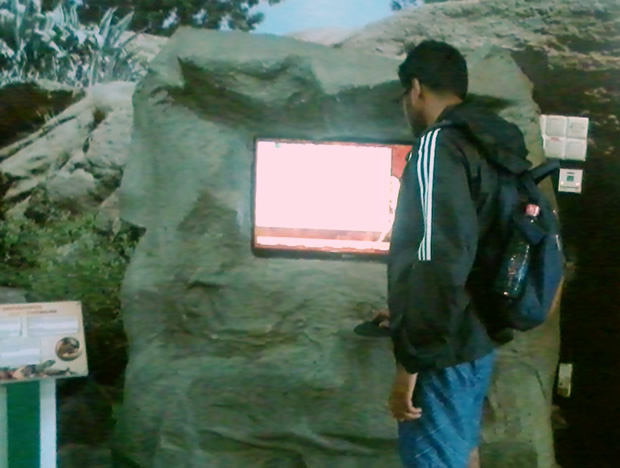
It started by showing a dinosaur fossil completely buried under the sand and asking the learner to use the available tools to unearth the fossil. The learner was required to click to select each of the tools (a pick, a hammer and chisel, and finally a brush) in turn, and then ‘use’ them (by clicking) to dig/chip/brush away the sand. With each click, some of the sand disappears and a portion of the fossil is revealed, until finally the entire dinosaur skeleton is exposed. The learner is then asked to ‘use’ the Plaster of Paris that is provided to fill in the hole that has been dug in order to create an impression of the fossil.

Another of the interactivities covered the process for manufacturing a new car, right from the designing to the release of the car. It was scenario-based and featured some employees of a car company who had been asked to come up with a new car. The learner could click to select a particular stage of the process and watch the employees as they perform the tasks that were involved.
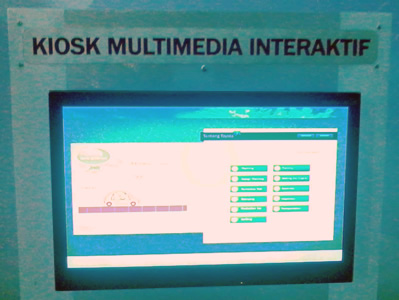
We were excited to see how eLearning has been used at Taman Pintar. The number of interactivities may not have been a lot, and the quality of the English that was used may not have been too good (in the interactivities that were actually in English), but we got the feeling that the owners will add more eLearning interactivities and that they will improve with time.
The Bottom Line: The Government of Yogyakarta City has spent a lot of money and taken a lot of effort to create an environment where people can feel interested and inspired to gain knowledge in a fun and interactive way, and they provide this knowledge at a price that nearly everyone can afford (which is a fraction of the cost they would definitely have spent to build and maintain the facility).
Although I have never been to the Smithsonian, I have heard that it also has a lot of interactive learning experiences and that Taman Pintar is locally known as the ‘Mini Smithsonian’. If you have been to or heard of other such centers that use eLearning to interest and educate their visitors, feel free to drop me a line regarding the way they do so. I would love to hear about your experiences.
Upcoming Webinar
Implementing Tablets for Learning | 19th December, 10.00 AM GMT.
Upcoming Events
Learning Technologies 2014 | Jan 29-30 | Olympia 2, London | Stand 112 LEARNTEC 2014 | Feb 4-6 | Karlsruhe, Germany | Stand No. B-12


